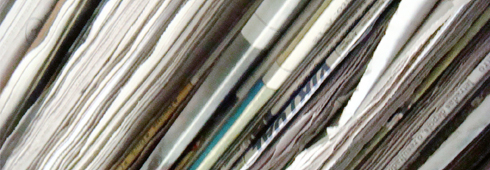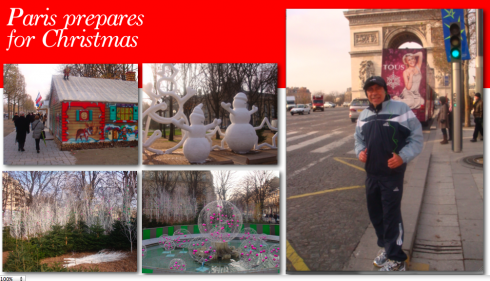
Buyer for The Miami Herald?
The announcement of The Miami Herald for sale hit me especially hard this morning. After all, this is like finding out that your grandmother’s house, where you grew up and ate her classic bread pudding, is now seeking new owners. I was 20 years old when I first entered the Herald’s building, at One Herald Plaza, an eager and ambitious summer intern working with the now defunct afternoon newspaper, The Miami News, which was published in the same place. Through the years, I have had various degrees of association with The Herald, always as a consultant with both its English and Spanish editions.
The Miami Herald was the first newspaper I ever read—or attempted to read—- in the English language.
In fact, I had barely been in the U.S. two hours, when they took me from the airport to visit my uncle Hector’s barber shop on LeJeune Road. My uncle was cutting the hair of a very tall, blond man, whose face I could not see, as he was sort of draped by a double page copy of a newspaper in a language I could not read.
I remember the instant that happened, and me saying to myself: Oh, I can’t understand this language. I must learn it soon. It was February 28, 1962.
Indeed, The Miami Herald became my daily English teacher. I not only read The Miami Herald, I also circled words I did not understand (which were many), turning to the dictionary for their meaning. In the process, I discovered columnists, famous reporters of the 1960s, and, in fact, became fascinated with American journalism, a subject for which I still have a passion.
If I had the ability to buy The Miami Herald, I would not think about it twice, then I would do the following:
1. Convert it to a compact. A large majority of Miami residents are Latins, who love the smaller-size newspapers.
To see our 2002 models of how we would design The Miami Herald as a compact, go here:
https://garciamedia.com/blog/articles/usa_todays_richard_curtis_retires._also_weekend_sequels
2. I would make it look and read less like a newspaper from Detroit or Columbus, and concoct a cocktail part cosmo part mojito—-with extra sugar added. Make the headlines bolder and bigger. Use more photos, both big and small, and show the people who live there more, especially the young ones, of which there are many.
3. I would take a good look at newspapers such as Folha de Sao Paulo and O Povo(Brazil), Clarin (Argentina), El Pais and Marca (Spain), to get ideas about color and story presentation.
4. I would insist that the advertising department dare be more experimental with ad positioning.
5. I would add young Miami columnists who know the city well, and who can do sort of daily blogs of all that is good and interesting and happening there.
6. I would be aware that to many in the larger Miami area, English is not their first language. I would make attempts to make the newspaper very pictorial, seeking to provide avenues for these new Americans to find their Miami Herald as helpful as I did almost five decades ago.
The AP report:
http://www.google.com/hostednews/ap/article/ALeqM5g34hv4FWB22S3bx5iHAaxRODmjKQD94TK4N80
The post-Murdoch Wall Street Journal
Thank God to Newsweek.com for offering a bit of good news, yes, The Wall Street Journal, in its new mission under Rupert Murdoch, seems to have made gains. In a piece titled “Murdoch’s Last Laugh”, Newsweek reports that just a year after buying The Wall Street Journal, “the press rapscallion” has revitalized the fusty paper.
So far, the results are mixed, susceptible to different interpretations and haven’t immunized parent News Corp. from the pounding that all media stocks are absorbing this year. The Journal is drawing more readers and advertisers, including coveted luxury brands. Newsstand sales have soared by more than 20 percent since the economic crisis. Dow Jones is looking to add color capacity, according to a company publishing executive who isn’t authorized to discuss the subject. WSJ.com now draws more than 20 million unique visitors per month, and enjoys the enviable distinction of a dual stream of revenues from subscribers and advertisers.
The changes in the printed edition of the WSJ are obvious. As one who has worked as a consultant on a variety of projects with the pre-Murdoch Wall Street Journal, I have noticed many changes from day to day: the multi-column lead headlines are the most obvious. In a newspaper where the one column head was king, and the two column heads were reserved for something more newsworthy on page one, THIS is a big change. The legendary pencil sketches of people in the news, such a staple of the WSJ that they are even kept in the Smithsonian Institution, are now seen less and less, but color photos are a staple of page one. The What’s News navigator, one of the signatures of the WSJ, now has been placed on quick wheels that move it from here to there, depending on what goes at the top of the page, usually as a six-column lead piece. True, the financial crisis has deserved splashy headlines, sort of as if it was a 9/11 type catastrophe daily, but I sometimes wonder how the previous WSJ newsroom leadership would have handled it, probably tempering the size and boldness of lead headlines as the daily crisis became more of a familiar news item.
For the full article about Murdoch:
http://www.newsweek.com/id/171904
Read what Tina Brown and Larry Kramer have to write about how the financial crisis affects newspapers:
http://www.thedailybeast.com
New Pulitzer Prize categories announced

In the good news front, I am happy to read that The Pulitzer Prizes in journalism, which honor the work of American newspapers appearing in print, have been expanded to include many text-based newspapers and news organizations that publish only on the Internet, the Pulitzer Prize Board announced today.
The Board also has decided to allow entries made up entirely of online content to be submitted in all 14 Pulitzer journalism categories.
Indeed, an acknowledgement by those in charge of granting most prestigious of all journalism awards that there is some terrific , groundbreaking, service oriented journalism taking place online. I know that this news will be all that was needed to convince those print editors who still consider their online editions to be poor relatives of print that such is not the case.
Congratulations to the Pulitzer Prize Board for making this decision.

Roger Cohen, columnist, in the International Herald-Tribune, Monday, Dec. 8, 2008:
Cohen, who writes about a recent trip to Havana, Cuba, and compares that capital to Paris, reminisces:
The slugs of Havana Club rum in bars lit by fluorescent light, the dominos banged on street tables, the raucous conversations in high doorways, the whiff of puros, the beat through bad speakers of drums and maracas, the idle sensuality of Blackberry-free days: Cuba took me back decades to an era when time did not always demand to be put to use.
For the entire column:
http://www.iht.com/articles/2008/12/07/opinion/edcohen.php
For official press release:
http://www.pulitzer.org/new_eligibility_rules

To read TheRodrigoFino blog, in Spanish, go:
https://garciamedia.com/latinamerica/blog/

Today, Rodrigo Fino writes about what he titles, Black Days, and analyzes the dark cloud surrounding media companies worldwide.


When my first meeting got pushed back two hours today, I saw this as a window of running opportunity, and, in Paris, this is an incredibly window, with the best view running shoes can ever hope for. Out I went, and, to my delight, saw Paris sprucing up for Christmas, one lamp post at a time; workers were putting up decorations all along the Champs D’Elysees, which, by the way, is already lined up with small white kiosks, all identical, forming a Christmas market with the aroma of roasted chestnuts, warm wine, and every possible arts and craft item. Yes, it is Paris, so you can get that Edith Piaf CD with her signature song, La Vie En Rose, as well as the CD by France’s own singing first lady, Carla Bruni Sarkozy.The image here gives you glimpses of what I saw during my one-hour run thru the center of this beautiful city. Yes, 4 degrees today.
TheMarioBlog posting #150